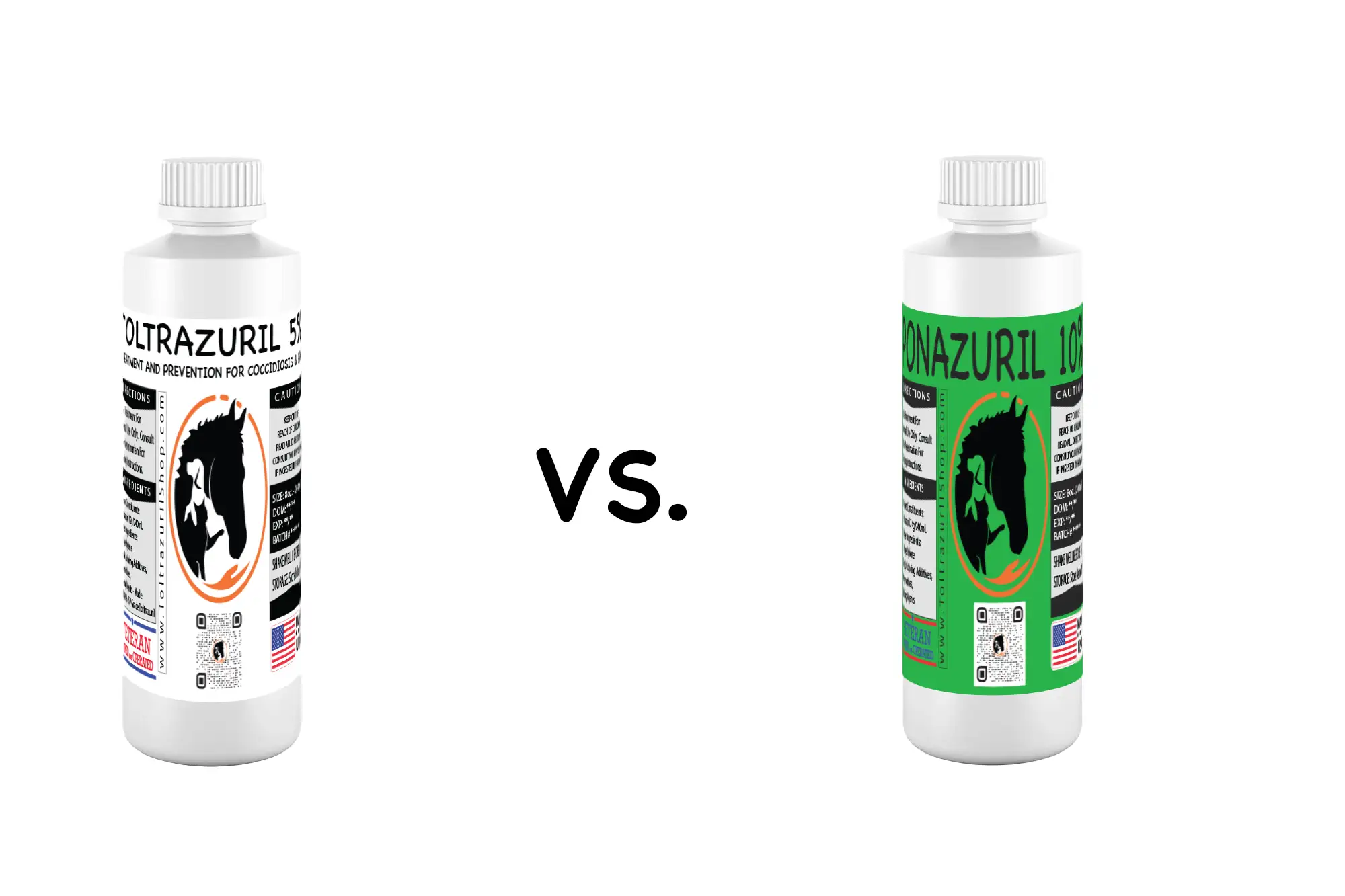In this article we will compare the Toltrazuril vs. Ponazuril for their advantages and disadvantages. Equine Protozoal Myeloencephalitis (EPM) is a severe neurological disease affecting horses, caused by the protozoan parasite Sarcocystis neurona. Treatment has evolved with the development of antiprotozoal drugs like toltrazuril and ponazuril.
Toltrazuril is a cutting-edge antiprotozoal medication, belonging to the triazine class, which has been found to be highly effective in treating Equine Protozoal Myeloencephalitis (EPM). This disease, caused by the Sarcocy
Understanding Toltrazuril and Its Efficacy
Toltrazuril, a member of the triazine class of antiprotozoal medications, has been shown to be highly effective in treating EPM. This drug specifically targets the apicoplast, an essential organelle within the protozoan Sarcocystis neurona responsible for its survival. By interfering with the parasite’s apicoplast, toltrazuril disrupts its life cycle, leading to effective elimination of the protozoa.
Dosage and Administration: Toltrazuril is administered orally at a dosage of 20 mg/kg once daily for five consecutive days. Clinical studies have demonstrated that this regimen is comparable in effectiveness to traditional treatments, showing a reduction in clinical signs and an improvement in neurological function. The favorable safety profile of toltrazuril, with infrequent and generally mild side effects, makes it a safe choice for equine therapy.
Advantages of Toltrazuril:
- Targeted Action: Toltrazuril’s selectivity for apicomplexan protozoa minimizes potential toxicity to mammalian cells.
- Safety: The drug is well-tolerated, with minimal adverse effects, making it suitable for long-term management.
Considerations: While toltrazuril is effective in targeting the protozoan parasite, its impact on pre-existing neurological damage is less clear, necessitating thorough veterinary evaluation.
Evaluating Ponazuril: Benefits and Limitations
Ponazuril is a notable alternative in the treatment of EPM, distinguished by its ability to cross the blood-brain barrier. This capability is crucial because it allows ponazuril to reach the central nervous system, where the Sarcocystis neurona parasite causes significant damage and inflammation.
FDA Approval and Usage: Ponazuril was the first medication approved by the FDA specifically for EPM. It aims to eradicate protozoal parasites, reduce inflammation within the central nervous system, and promote neurological recovery. Ponazuril is typically administered at a dosage of 5 mg/kg once daily for 28 days.
Advantages of Ponazuril:
- Crosses Blood-Brain Barrier: Essential for addressing the central nervous system involvement in EPM.
- Effective Parasite Clearance: Demonstrated efficacy in reducing protozoal loads and inflammation.
Considerations: Despite its effectiveness, ponazuril does not reverse neurological damage that occurred before treatment. Additionally, the optimal treatment duration is debated, with recommendations ranging from the standard 28 days to an extended period of up to 56 days, depending on the severity of the condition.
Safety Profile: Ponazuril is generally well-tolerated, though some horses may experience mild side effects such as skin rashes, gastrointestinal disturbances, or, rarely, more severe reactions like convulsions. Monitoring by a veterinarian during treatment is essential to manage any potential adverse effects.
Choosing Between Toltrazuril vs. Ponazuril
When deciding between toltrazuril vs. ponazuril for treating EPM, veterinarians must consider several factors:
- Disease Stage: Ponazuril’s ability to penetrate the blood-brain barrier makes it particularly useful in cases where central nervous system involvement is significant.
- Overall Health of the Horse: The horse’s general health and tolerance to medication play a role in choosing the appropriate treatment.
- Treatment Goals: While toltrazuril is effective in targeting protozoan parasites, ponazuril may be preferred for its ability to address central nervous system inflammation directly.
Sources and Support: Both medications are available from reputable suppliers such as ToltrazurilShop.com, which offers high-quality products and detailed usage instructions to ensure effective treatment.
Conclusion
Toltrazuril and ponazuril are both valuable in the treatment of Equine Protozoal Myeloencephalitis (EPM), each with its unique benefits and limitations. While deciding between toltrazuril vs. ponazuril one should keep it in mind that Toltrazuril is noted for its targeted action and safety, while ponazuril’s ability to cross the blood-brain barrier provides an advantage in managing central nervous system involvement. The choice between these medications should be guided by veterinary expertise, considering the specific needs of the horse and the clinical presentation of EPM. Watch our video guide on Youtube.

